Affiliate links on Android Authority may earn us a commission. Learn more.
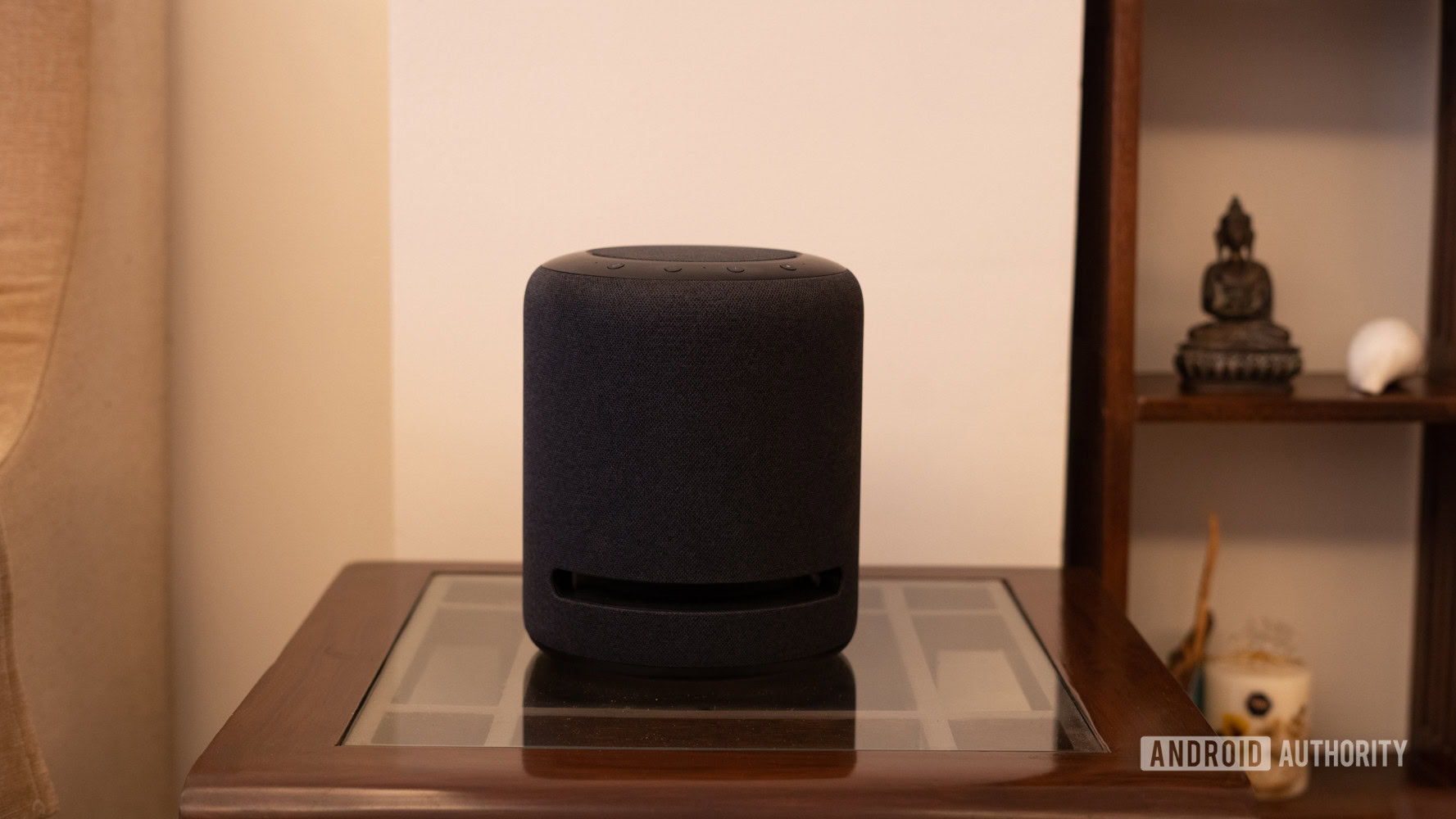
The Amazon Echo Studio is the best smart speaker you can buy
Published onDecember 12, 2019
Amazon Echo Studio
What we like
What we don't like
Amazon Echo Studio

With a device for every use case and budget, Amazon has managed to build one of the most robust smart speaker and display portfolios over the last few years. High-fidelity audio was, however, a noticeable exception. Enter the Amazon Echo Studio, a speaker aimed at a more discerning audience that demands better sound. The Echo Studio takes aim at the Sonos One, the Google Home Max, and, if the hardware and software are anything to go by, it might just surpass the competition.
Is the Amazon Echo Studio the smart speaker to beat? We find out in the Android Authority review.
Amazon Echo Studio review: The big picture
Connected speakers are one of the fastest-growing categories of audio devices. At the same time, there is a growing demand for smart speakers with higher quality audio. While Sonos has been the mainstay of the connected, high-fidelity audio world, other device makers want a piece of the pie.
Sporting a high-quality DAC/amp, even better drivers, and the promise of delivering 3D audio, Amazon is positioning the Echo Studio to stand as the flag bearer for its HD music service. It also hopes to sway audiophiles and audio enthusiasts with its value proposition.
Design and hardware
For all its focus on creating a line-up of affordable and well-performing smart speakers, Amazon’s Echo devices are far from aesthetically pleasing. The Echo Studio makes no improvement in this respect. This hulking smart speaker looks more like an early prototype from the design lab than something you would happily display as the centerpiece of your home audio system.
Like every other Echo speaker, the Echo Studio sports a copious amount of hard, gray-colored plastic. A strip of color-matched fabric adds a dash of color that, unfortunately, picks up dust easily. Meanwhile, a wide, yawning slit runs around the lower half of the speaker to aid the downward-firing, 5.2-inch woofer.
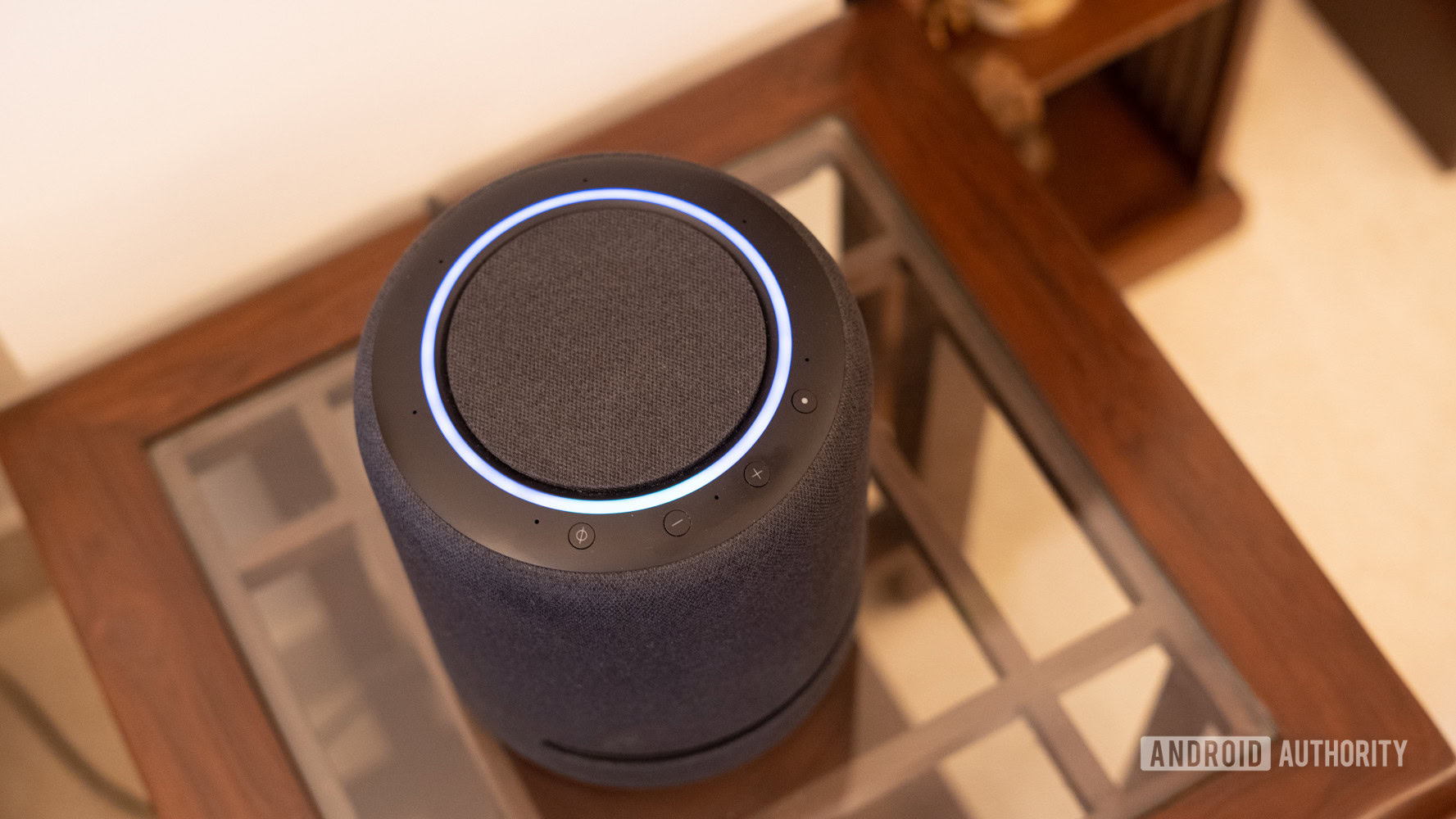
The top of the speaker sports the four buttons that are a staple of all Echo speakers. From the left to right: the microphone mute switch, volume down, volume up, and Alexa key. A light ring circles the upward-firing tweeter. The ring lights up in response to Alexa commands and volume adjustments. Finally, an eight-microphone array dots the top. I found the array to be sufficiently capable of hearing commands from across the room, even with the volume cranked up.
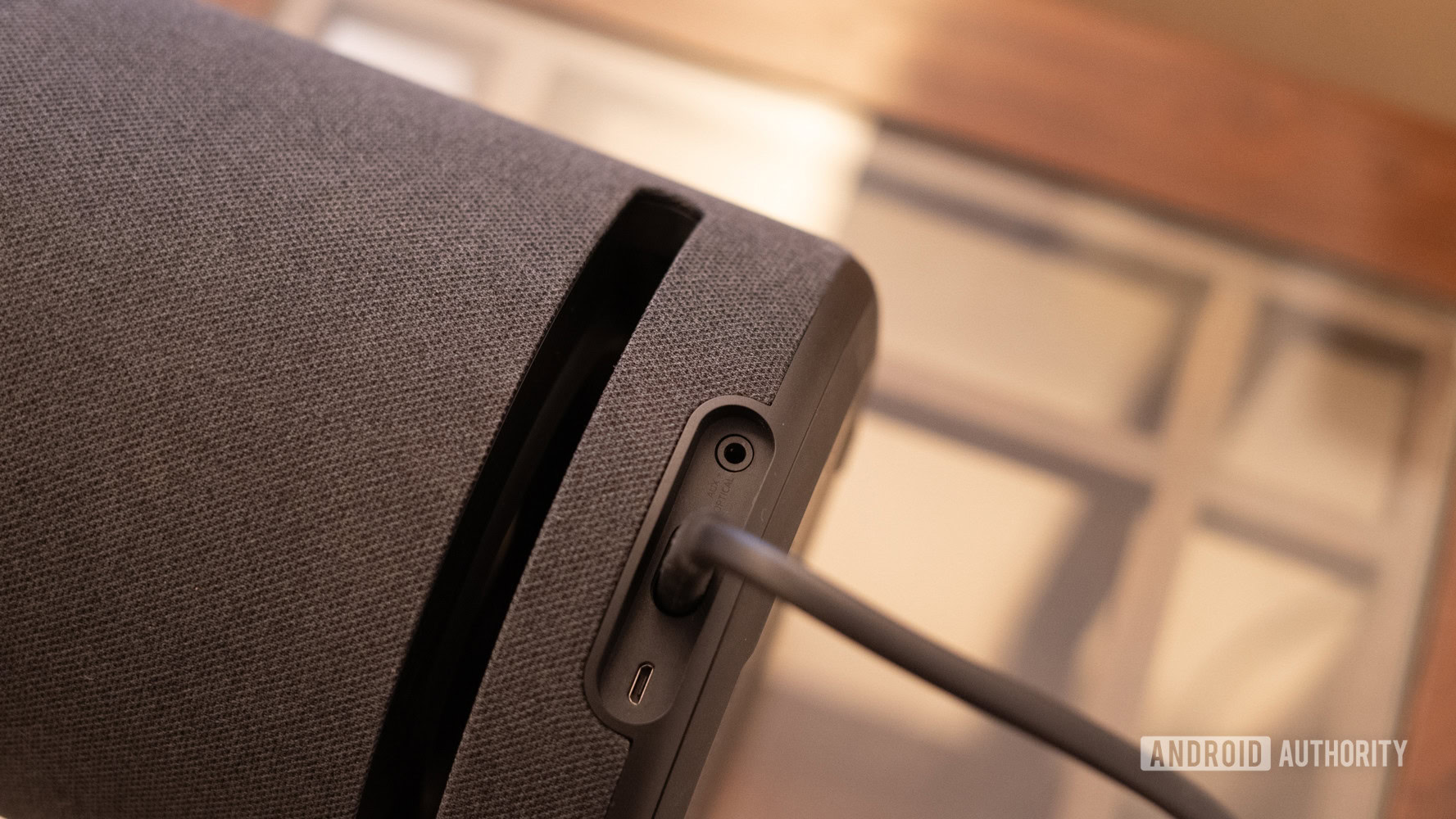
Elsewhere, there is a single port that doubles up a line-input or optical source. The Echo Studio uses a mini optical port, so you might have to search just a bit harder to find an appropriate cable. Do note that multi-room audio will not work when using the optical-in port. Next to it is a barrel connector for power, as well as a micro-USB port for accessories such as the official ethernet adaptor.
So how does the Echo Studio sound?
- 5.25-inch (133mm) downward-firing woofer
- 1.97-inch (50mm) mid-range drivers for left, right, up channels
- 0.98-inch (25mm) tweeter
- Dolby Atmos compatible
As the most advanced speaker made by Amazon, you get a whole lot of power for your money. The Echo Studio uses a combination of five speakers: the downward-firing woofer, two mid-range drivers that handle left and right channels, another mid-range speaker that fires upwards, and a forward-facing tweeter. All together, Amazon rates the Echo Studio at about 330W of power. Peak volume levels reach as high as 90db, meaning the Echo Studio is crazy loud and can easily fill up a mid-large sized room.
Volume, however, doesn’t necessarily equal quality. In my time with the Echo Studio, I found the audio presentation to vary between “not bad” and “very good.” It also revealed a very specific sound signature.
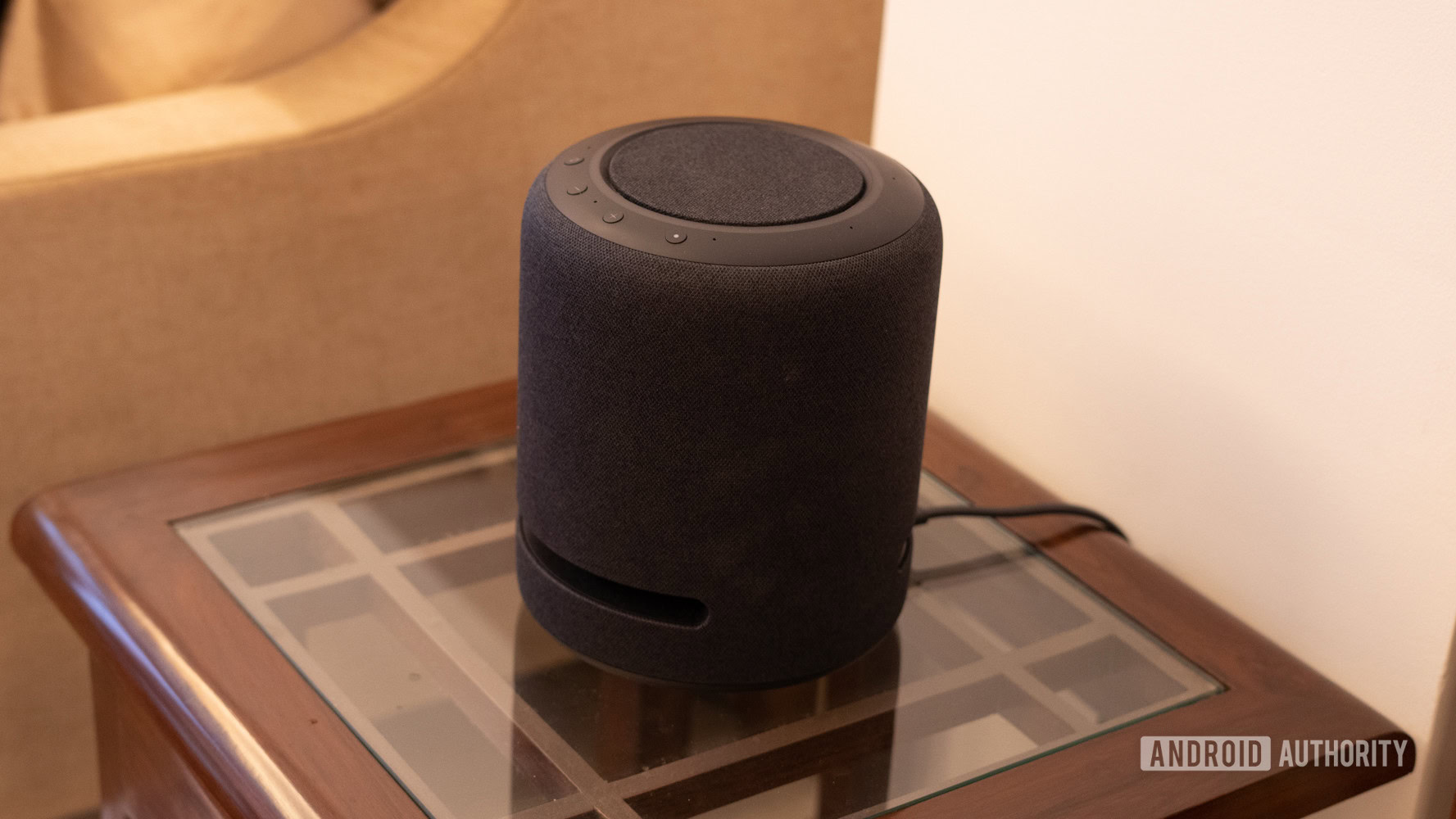
The Echo Studio has a tendency to place an emphasis on mids. Listening to Colors by Black Pumas, vocals and the acoustic guitar clearly cut through the mix. The left and right channels display a decent amount of separation, though it is limited due to the nature of its design. Don’t expect a soundscape even close to what’s possible from a dedicated stereo set up.
I found the treble response to be reasonably good, but the strong mids have a tendency to drown out the highs to a degree. It is a somewhat laid-back presentation without much sibilance.
The Echo Studio pushes out muddy and bloated bass that can often overpower the sound.
Bass is, predictably, where things start going downhill. It is hard to deliver quality bass, and more so in a single box solution such as the Echo Studio. As a result, bass is voluminous, but also bloated and muddy. The Alexa app allows for basic customization of the sound signature. Bringing the bass slider down a few notches made a noticeable improvement in audio quality.
But what about 3D audio?
With the Echo Studio, Amazon has a gimmick up its sleeve: With support for both Dolby Atmos and Sony’s 3D audio tracks, Amazon claims the Echo Studio can recreate a 3D soundscape thanks to the combination of directional speakers.
In reality, a woefully limited selection of tracks do little to convince you. There are about a 1,000 3D audio tracks available across TIDAL and Amazon HD. I was able to demo of some of the tracks, and while there is a mild difference — mostly in terms of a sense of height — I would certainly not base my purchase on the promise of 3D audio. As it stands, it comes across as more of an experiment for the future of audio than a generational leap.
I wouldn't recommend buying the Echo Studio for 3D audio alone.
Amazon also built upscaling for spatial audio into the Echo Studio’s software. Unfortunately, audio quality takes a very noticeable step back when this is enabled and the expanded soundscape is barely noticeable. I would recommend keeping the setting switched off.
It is possible to pair the Echo Studio with the Fire Stick 4K or a Fire TV box to use it as a Dolby Atmos capable speaker. However, during my testing, I could not get this to work. It is, however, possible to pair two Echo Studios to get true stereo imaging. If you really want to invest in the ecosystem, you could also throw in Amazon’s Echo Sub to improve bass response.
Is the Amazon Echo Studio a good smart speaker?
At its heart, the Echo Studio is the same as the Echo Plus. You get the same AI smarts available to all Alexa-powered speakers. Additionally, the Echo Studio packs a Zigbee radio, which gives you hub-less control for Zigbee-based products such as the entire Philips Hue ecosystem. Alexa is what you make of it.
The eight-microphone array did a pretty good job at recognizing my voice from across the room. Even with the music cranked up, more often than not, my queries were answered correctly. Again, this is what’s available to all Alexa speakers. On my table-top setup, it was easy to see the LED ring light up whenever I invoked Alexa; However, if you place the Echo Studio on a high shelf it might be harder to see.
Value for money
- Amazon Echo Studio — $199, Rs. 22,999
The Echo Studio is a fairly premium smart speaker. At its price tag of $199, it handily surpasses the competing Sonos Play One in terms of capabilities thanks to its built-in Zigbee hub, more powerful speaker, and, for the most part, better sound quality.
As far as standalone speakers go, the Echo Studio delivers fantastic bang for the buck. It sounds plenty good, though it isn’t quite the audiophile speaker Amazon might want you to believe it is. There’s oodles of volume here for when you want to throw a party, as well as all the connected smarts you could hope for.
Amazon Echo Studio review: The verdict
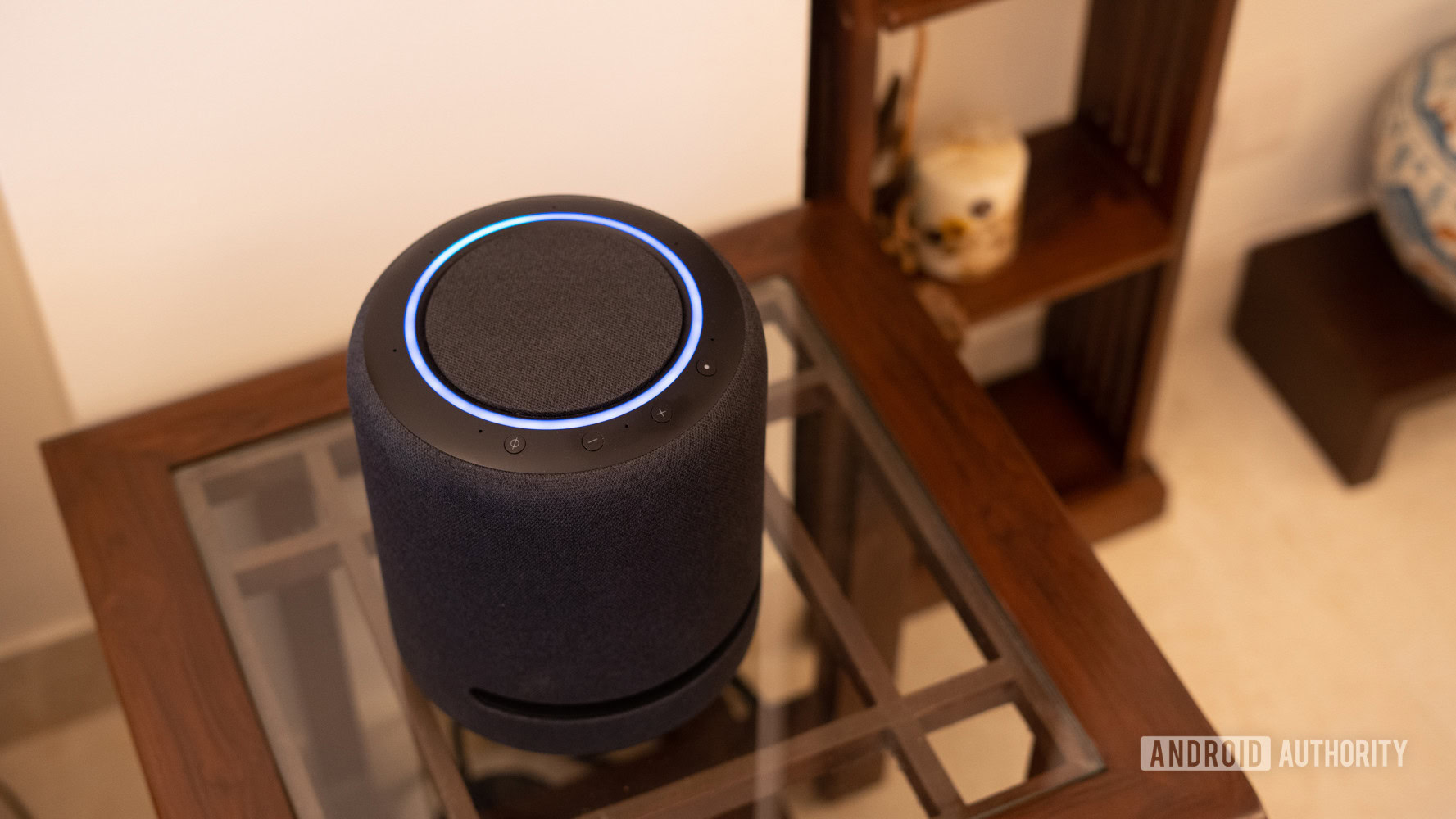
Amazon has a winner on its hands with the Echo Studio. The audio performance is consumer-friendly and punches above the competition at similar — and even higher — price points. Moreover, the built-in Zigbee hub and Alexa integration make it a fantastic addition to your connected home.
At $199, the Amazon Echo Studio is priced to move and a no-brainer if you’re looking to up your connected speaker game.